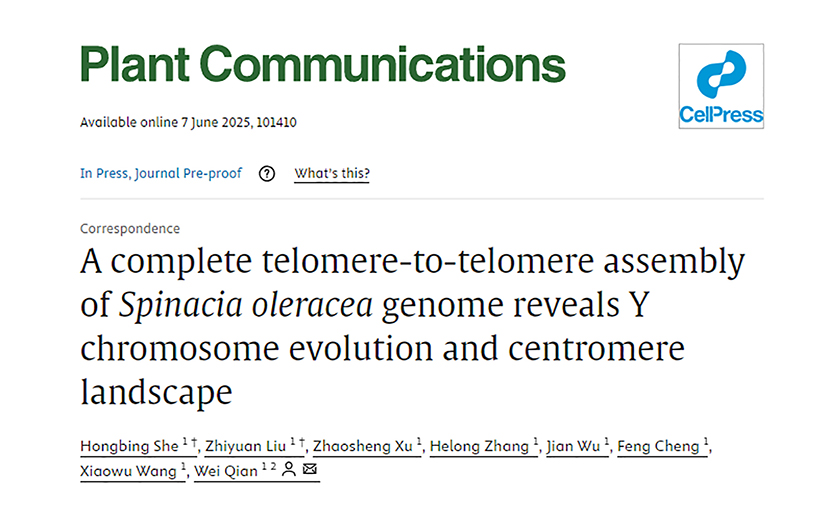Recently, the research team led by Qian Wei at the Institute of Vegetables and Flowers (IVF), Chinese Academy of Agricultural Sciences (CAAS), deciphered the complete genome of the spinach YY male plant and revealed Y chromosome evolution and centromere landscape. The findings were published in the Plant Communications.

Spinach (Spinacia oleracea L.) is a typical dioecious vegetable crop, and research on sex differentiation is of great significance for spinach hybrid breeding. Previously, the team completed the genomic map of the spinach YY male plant (containing two Y chromosomes) (Sp_YY_v1) and identified the sex determination region in spinach. However, limited by sequencing technology, the Sp_YY_v1 genome still contained 74 unanchored sequences and 109 gaps.

This study utilized technologies such as HiFi, Ultra-long ONT, and Iso-seq to construct a gap-free, telomere-to-telomere (T2T) spinach YY male plant genome, Sp_YY_v2. The genome size is 926 Mb, successfully identifying 6 centromeres and 12 telomere regions. A total of 28,247 genes were annotated, with a BUSCO value of 99.3%. The study identified 14,248 Y chromosome-specific SNPs. Population analysis revealed gene flow between the Y chromosomes of cultivated spinach and its wild relative S. turkestanica, and identified three Y chromosome haplotypes (YG1-YG3). Their differentiation is concentrated in recombination-suppressed regions, such as pericentromeric regions and the sex-linked region. Spinach centromere regions lack typical satellite sequences and are primarily composed of the CRM retrotransposon. The study found genes within the centromeres whose density positively correlates with the copy number of CRM. These genes are mostly reverse transcriptase genes, which may promote CRM amplification. This high-quality T2T genome provides a key resource for studying spinach sex determination mechanisms, sex chromosome evolution, and centromere function, holding significant importance for spinach genetic improvement.
Researcher Hongbing She and Researcher Zhiyuan Liu from the IVF-CAAS, are the co-first authors of this paper; Researcher Wei Qian is the corresponding authors. This work was supported by the Youth innovation Program of Chinese Academy of Agricultural Sciences (Y2023QC07), Chinese Academy of Agricultural Sciences Innovation Project (CAAS-ASTIP-IVFCAAS), and China Agricultural Research System (CARS-23-A-17).
Link: https://www.sciencedirect.com/science/article/pii/S2590346225001725